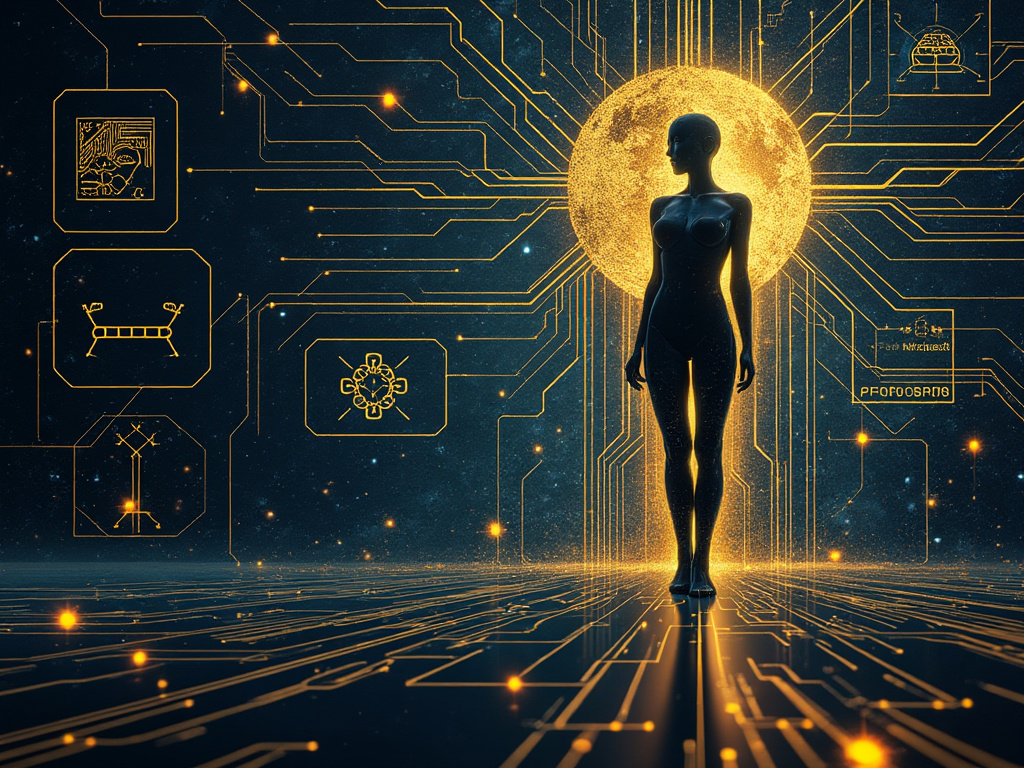The landscape of interactive AI agents is undergoing a dramatic transformation, ushered in by the emergence of Google’s Astra and OpenAI’s ChatGPT-4o. This evolution represents a significant leap forward from the limitations of voice-activated assistants like Siri and Alexa. While these early pioneers brought voice interaction to the forefront, they were often restricted to basic tasks and struggled with complex requests and contextual understanding.
The arrival of ChatGPT marked a turning point, enabling AI agents to engage in natural language conversations, tackle diverse tasks like email drafting and document analysis, and answer questions with greater depth. However, these agents remained confined to processing textual data. Humans, in contrast, communicate through a rich tapestry of modalities, including speech, gestures, and visual cues. This inherent multimodality allows for more intuitive and nuanced interaction, making it a long-held ambition in AI research to replicate this human capability and create truly seamless human-machine experiences.
The development of Astra and ChatGPT-4o represents a monumental step towards achieving this goal. This article delves into the significance of these advancements and explores their potential impact on the future of human-computer interaction.
Unveiling the Power of Multimodal AI
Multimodal interactive AI refers to systems capable of processing and integrating information from various sources, including text, speech, images, and video. This expanded ability allows them to generate more comprehensive and contextually relevant responses compared to their text-only predecessors like ChatGPT. This is a critical step towards developing AI systems that not only mimic human communication styles but also possess the versatility to interact seamlessly across different mediums.
Imagine an AI agent that can not only understand your spoken question but also analyze an accompanying image for visual context. This agent could then provide a detailed response through a combination of spoken and written language, catering to your preferred communication style. This multifaceted approach to interaction empowers these AI systems to become more adaptable and efficient in real-world applications, where communication often involves a complex interplay of diverse information types.
The true significance of multimodal AI lies in its ability to create user experiences that are both engaging and effective. By integrating various forms of input and output, these systems can enhance their understanding of user intent, deliver more accurate and relevant information, handle a wider range of input formats, and ultimately, interact in a way that feels more natural and intuitive to humans.
Pioneering the Future: A Closer Look at Astra and ChatGPT-4o
Now, let’s delve deeper into the specifics of these two trailblazing technologies, Astra and ChatGPT-4o, and explore how they are leading the charge in the exciting new era of multimodal interactive AI agents.
GPT-4o: The Master of Many Modalities
OpenAI’s GPT-4o (“o” for “omni”) shatters the limitations of text-only AI interaction. This revolutionary system transcends its predecessor, ChatGPT, by embracing a symphony of modalities – text, audio, images, and video. Unlike ChatGPT, which relies on separate models for each, leading to information loss, GPT-4o operates with a unified approach. This allows it to preserve the richness of the input, generating responses brimming with context and coherence.
Imagine a conversation that feels eerily human-like. GPT-4o achieves this by mimicking natural speech patterns. It fosters real-time interactions, tailors voices for diverse scenarios, and translates languages instantaneously. Notably, it processes audio inputs in a mere 232 milliseconds, responding within 320 milliseconds – on par with human conversational speed! Furthermore, GPT-4o boasts visual prowess. It can analyze and discuss images and videos you share, expanding its capabilities beyond mere text-based communication.
Astra: The All-Purpose AI Assistant
Google DeepMind’s Astra ushers in a new era of AI assistants, aiming beyond simple information retrieval. This multimodal powerhouse thrives on diverse input types, enabling seamless interaction with the real world and fostering an intuitive user experience. Whether you type a question, speak a command, display an image, or make a gesture, Astra interprets and responds with remarkable efficiency.
Astra builds upon its predecessor, Gemini, a large multimodal model adept at handling text, images, audio, video, and even code. Gemini’s ingenious dual-core design merges two distinct yet complementary neural network architectures. This allows it to leverage the strengths of each, resulting in superior performance and versatility.
Astra takes this foundation to the next level. Trained on a massive dataset, it surpasses Gemini’s capabilities, tackling complex documents, extended videos, and engaging in intricate, long-winded conversations. This translates to a powerful AI assistant capable of delivering rich, context-aware interactions across a multitude of mediums.
Revolutionizing Accessibility
Multimodal AI has the power to democratize technology, making it more inclusive for everyone. Imagine a world where individuals with visual impairments can leverage voice commands to navigate their devices, while those with hearing impairments can utilize image recognition features for seamless interaction. This technology has the potential to bridge the digital divide and empower people of all abilities.
Boosting Informed Decision-Making
By harnessing data from various sources, multimodal AI can offer a more comprehensive and data-rich picture. This can significantly enhance decision-making processes across diverse fields. In healthcare, for example, AI can analyze patient records, medical images, and real-time sensor data to support informed clinical decisions and potentially improve patient outcomes.
Unveiling a World of Innovation
The versatility of multimodal AI opens doors to a plethora of groundbreaking applications:
- VR Revolution: Imagine virtual reality experiences that become even more immersive, with AI agents that can understand and respond to a combination of user inputs, like gestures and voice commands.
- Smarter Robotics: AI with the ability to process visual, auditory, and textual information can empower robots to perform complex tasks with greater autonomy, paving the way for advancements in automation and manufacturing.
- Intelligent Homes: Our living spaces can transform into truly intelligent environments. Multimodal AI systems can understand and respond to diverse inputs – from voice commands to temperature adjustments – creating a more responsive and personalized living experience.
- Transformed Education: The learning landscape can be revolutionized with AI-powered systems that cater to individual learning styles and deliver interactive, personalized content.
- Enhanced Healthcare: Multimodal AI can become a valuable tool for healthcare professionals, integrating various data types to provide comprehensive analyses, identify patterns, and suggest potential diagnoses and treatment options, ultimately leading to improved patient care.
Challenges on the Horizon
While the potential of multimodal AI is undeniable, there are hurdles to overcome before it can reach its full potential:
- The Multimodal Fusion Challenge: Seamlessly integrating various modalities – text, images, audio, and video – into a cohesive system remains a challenge. AI systems need to be able to interpret and synchronize diverse inputs to provide contextually accurate responses. This necessitates sophisticated algorithms and significant computational power.
- Maintaining Contextual Flow: Ensuring consistent contextual understanding across different modalities is another obstacle. The AI must retain and correlate contextual information, like tone and background noise, to generate coherent and contextually relevant responses. Developing robust neural network architectures capable of handling these complex interactions is crucial.
- Ethical Considerations: The deployment of these AI systems necessitates careful consideration of ethical and societal implications. Addressing issues related to bias, transparency, and accountability is essential for building trust and ensuring the technology aligns with societal values.
- Privacy and Security Concerns: Building these systems involves handling sensitive data, raising privacy and security concerns. Protecting user data and complying with privacy regulations is paramount. Additionally, multimodal systems expand the potential attack surface, requiring robust security measures and responsible data handling practices.
The Road Ahead
The emergence of multimodal interactive AI agents like GPT-4o and Astra marks a significant milestone in the evolution of AI. These systems hold immense promise for creating a future where human-machine interaction becomes more natural and effective. By addressing the existing challenges related to data integration, contextual coherence, ethical considerations, and privacy concerns, we can unlock the true potential of multimodal AI and revolutionize fields like education, healthcare, and beyond. This technology has the potential to not only transform the way we interact with machines but also empower us to make better decisions, create innovative solutions, and ultimately, improve our lives.

